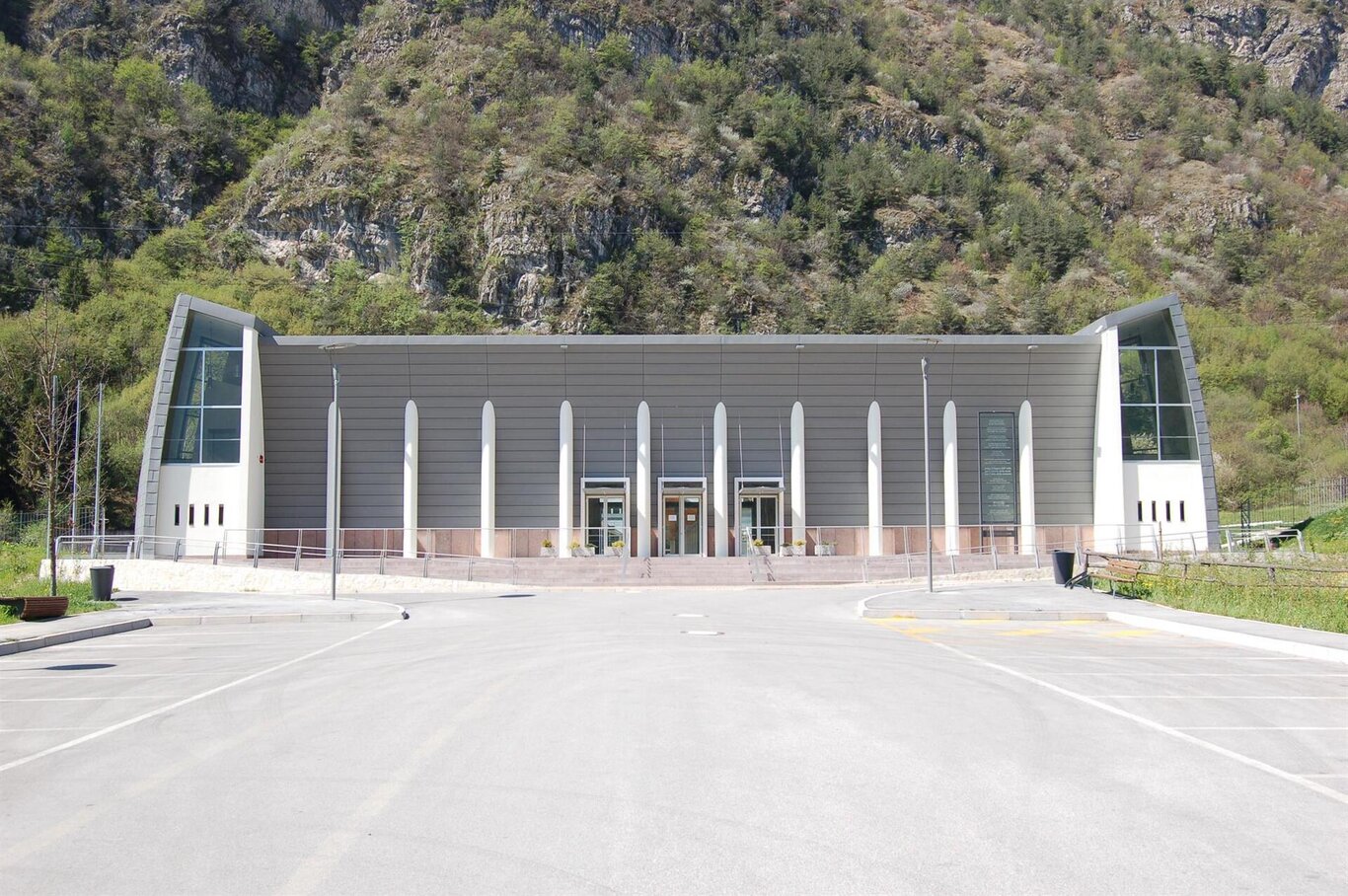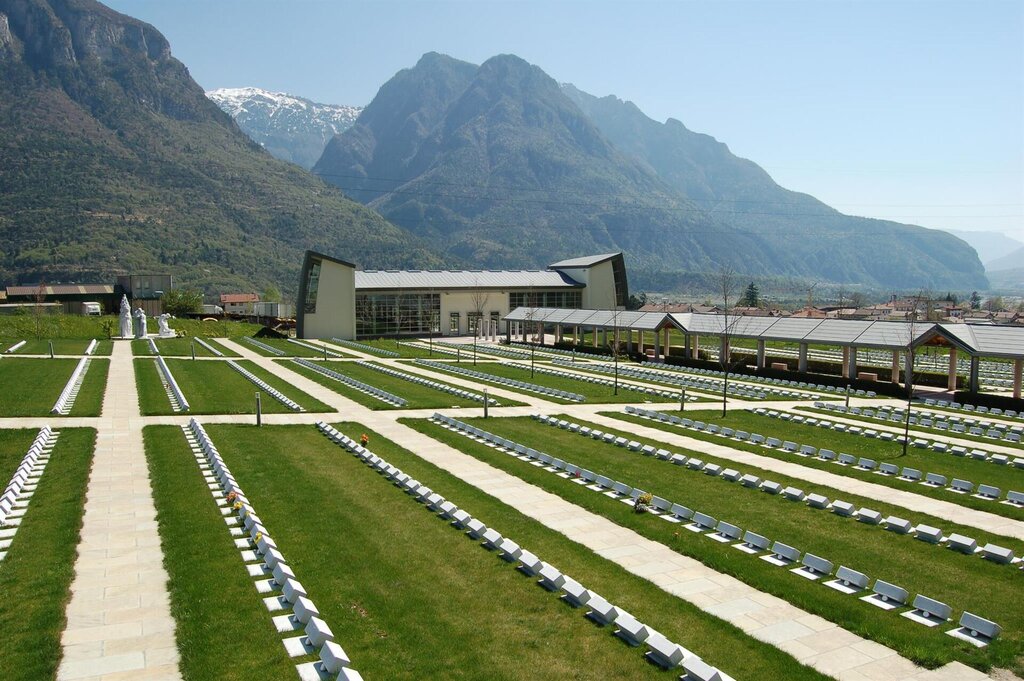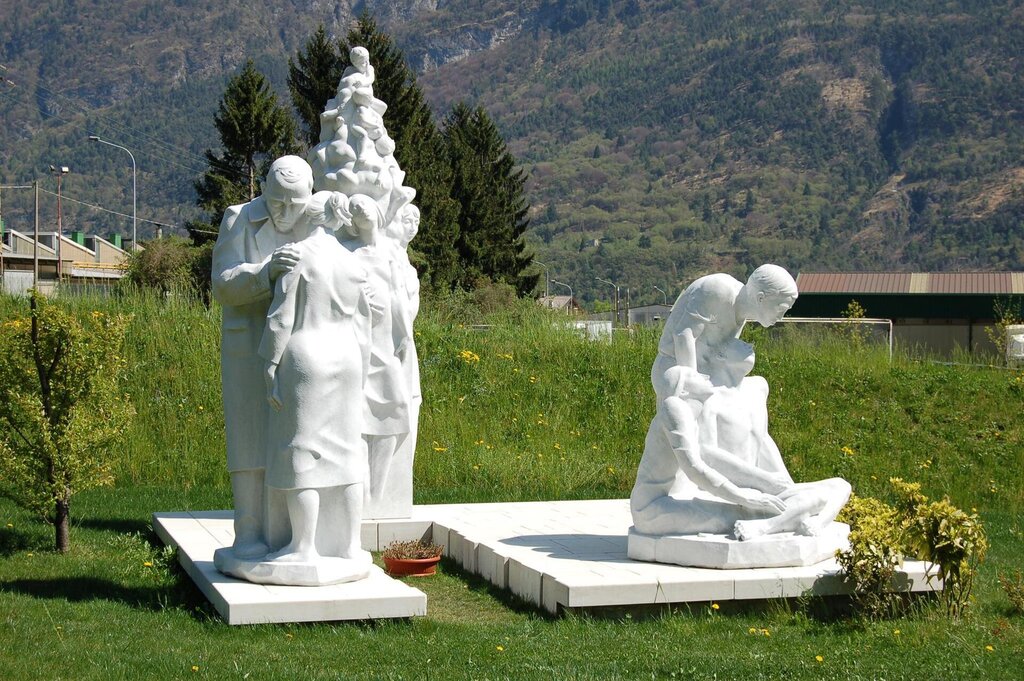The site where the current cemetery for the Victims of Vajont stands, in Fortogna, was not chosen by chance. From the very first hours of the tragedy, it was necessary to find a suitable area that would allow for the cataloging of the recovered bodies, and thus this site was identified, a short distance from the town of Fortogna – a hamlet of Longarone – where, in a short time, one of the saddest places in the history of Vajont was established.
The Bishop of Belluno, who suffered greatly from the tragedy and worked hard to alleviate the pain of the survivors, is now buried here, at his own request.
At the entrance of the cemetery, there is a portal where some historical artifacts can be seen and a photographic display related to the creation of the cemetery itself and some works inspired by the tragedy.
On the morning of October 10, 1963, in front of the pale mud plain left by the wave, the need to identify an area to bury the numerous Victims became clear. The cemetery for the Victims was therefore placed 4 km south of Longarone, in a hamlet of the municipality that was not hit by the wave, in a cornfield, consecrated, where graves were promptly dug to lower the coffins as the bodies would arrive on site.
The original cemetery had 1,464 crosses, of which only 700 had names: the majority of the Victims were, in fact, never identified.
The current monumental cemetery, inaugurated after the renovation in 2004, appears as an immense garden, on which rest 1,910 white marble stelae, one for each victim of the tragedy.



